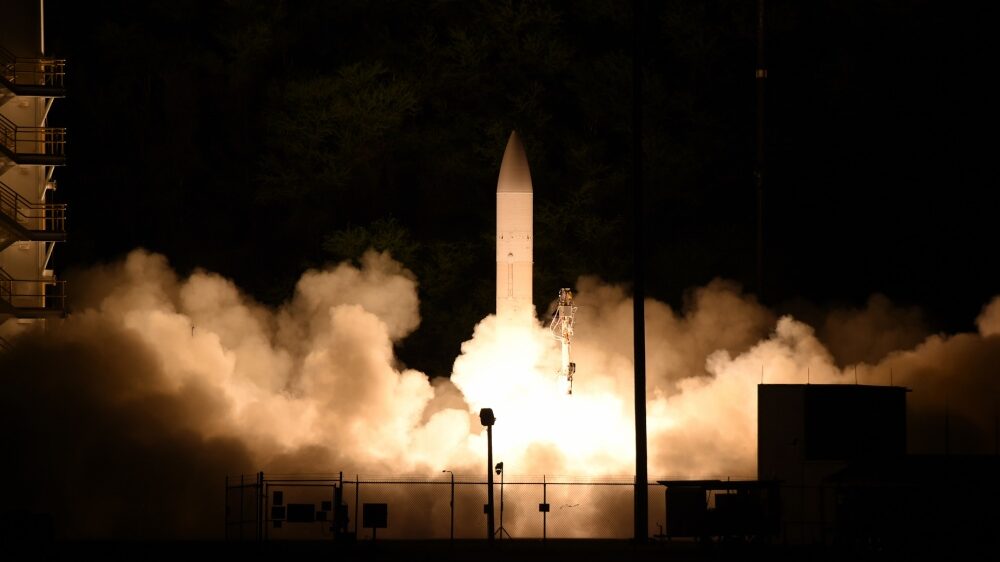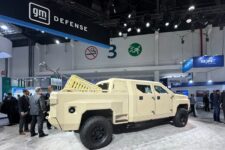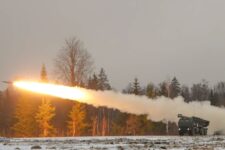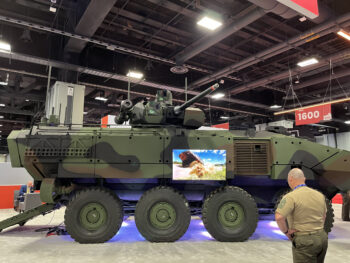
Launch of Army-Navy Common-Hypersonic Glide Body (C-HGB) in Hawaii on March 19, 2020. (US Navy)
WASHINGTON: The Missile Defense Agency has selected Raytheon and Northrop Grumman to move to the next phase of its Glide Phase Interceptor program as the agency works to beef up US defenses against hypersonic weapons.
The Defense Department announced in its contract announcements on June 24 that the two defense giants will receive firm-fixed price contract modifications worth more than $41.4 million to continue developing their proposals for the hypersonic missile defense system. The modification runs from June 27 to Feb. 15, 2023.
Last November, the agency announced other transaction agreements to Raytheon, Northrop and Lockheed Martin for GPI; Lockheed was not chosen to go to the next phase.
The Glide Phase Interceptor program is designed to knock down high-speed hypersonic missiles during the glide phase of flight. MDA’s continued investment in the program comes amid increasing worry from Pentagon officials and lawmakers about the hypersonic capabilities of China and Russia.
Under the new awards, the contractors will “continue to further develop and refine their concept leading to a system requirements review – prototype,” the contract announcement states. The total value of the contracts is over $60 million for each contractor.
While progress on the program continues, its overall timeline is still murky. Last month, MDA Director Vice Adm. Jon Hill said at an event in Washington that the overall timeline for the Glide Phase Interceptor wasn’t finalized because the program is still in the early phases.
“We’re just getting started,” he said.
The interceptors will be fired from Navy Aegis Ballistic Missile Defense destroyers and integrate into the Aegis Weapon System to detect, track and engage hypersonic missiles across the glide phase of a missile’s flight. The GPI is meant to fit into MDA’s “layered” missile defense architecture and defend against regional hypersonic missile threats.
“GPI will play a central role in ensuring the United States maintains the most reliable and advanced missile defense systems in the world that are capable of outpacing and defeating evolving missile threats,” Rich Straka, vice president of launch vehicles at Northrop Grumman, said in a statement.
Raytheon said in a press release that the award would allow the company to mature its GPI concept “using advanced materials and technology required to intercept a hypersonic threat.”
“Our GPI is built on proven missile defense technology as its foundation,” said Tay Fitzgerald, president of strategic missile defense at Raytheon Missiles & Defense, in a statement. “By using digital engineering and leveraging high technology readiness level components and subsystems already in use across Standard Missile and hypersonic programs, we can quickly advance the creation of this new interceptor.”
MDA requested $225 million for hypersonic defense in its fiscal 2023 budget request, in addition to a $318 million unfunded priority for additional hypersonic defense initiatives. Hill told lawmakers in May that any extra money Congress provided would be used to reduce technology risks in the program.
“The items that you see listed there specifically to the Glide Phase Interceptor is to risk reduce key technology areas — that’s a new regime up in the glide phase — and so seeker work, propulsion work, the old thermal protection system issues that will help to de-risk the program,” he said.
As DoD shifts $50B in spending, can an old playbook protect legacy programs?
Running through potential winners and losers under Defense Secretary Pete Hegseth’s move to shift $50 billion towards different priorities in fiscal 2026.


























